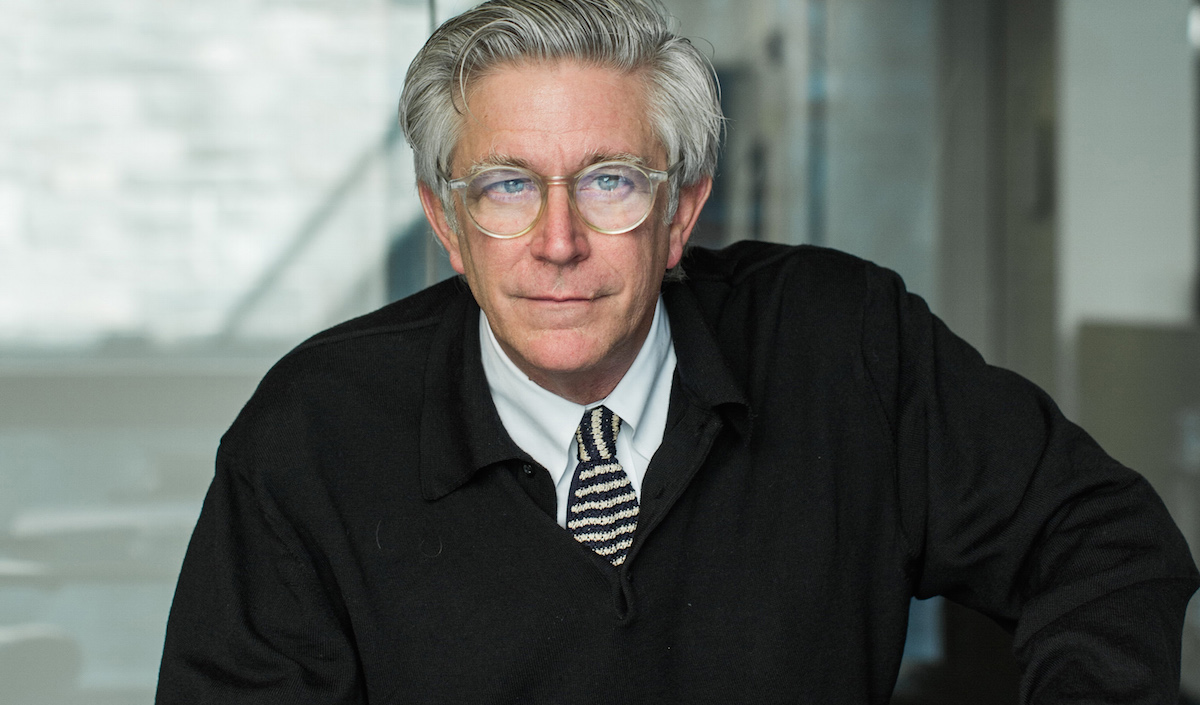Bill Hellmuth, AIA, officially took over as HOK’s Chief Executive Officer on April 19, with longtime CEO Patrick MacLeamy, FAIA, moving to chairman as part of a planned succession process that the firm first announced Jan. 25.
Hellmuth, who is based in the firm’s Washington, D.C., studio, has been HOK’s president since 2005. The firm will be led by a design principal for the first time since 1990, when Gyo Obata stepped down to assume the role of chairman. Hellmuth brings insight on managing the creative process—balancing the art and the business to generate the best design solutions and most value for clients. He will continue in his role as HOK’s firm-wide president and design principal for projects in the Washington, D.C., area and worldwide.
“Design excellence will define our future,” said Hellmuth. “I joined HOK in 1991 for the opportunity to be part of a practice that had the opportunity to do the best design work of its time. We’re now creating design solutions that address some of the world’s greatest challenges. We’ll continue broadening the scope of our creativity and problem solving and using design thinking to strengthen our design culture. This will continue to attract the best people and clients to HOK.”
Read more about Bill Hellmuth and his vision for the future of HOK in this Q+A profile.
HOK has current projects in 75 countries, and it has designed major urban plans, buildings and interior environments. Current and recent projects include the 80-story Capital Market Authority Tower in Riyadh, Saudi Arabia; the Porsche Cars North America Experience Center and Headquarters in Atlanta; the Anaheim Regional Transportation Intermodal Center (ARTIC) in Anaheim, California; and Mercedes-Benz Stadium in Atlanta.
HOK is a global design, architecture, engineering and planning firm with 24 offices worldwide. DesignIntelligence consistently ranks HOK as a leader in sustainable, high-performance design and technology innovation.
Related Stories
Sponsored | | Oct 13, 2014
Think you can recognize a metal building from the outside?
It’s getting more and more difficult to spot a metal building these days. What looks like brick, stucco or wood on the outside could actually be a metal building in disguise. SPONSORED CONTENT
Sponsored | | Oct 13, 2014
Liberty Utilities protects installers with Viega MegaPress
Liberty Utilities of New Hampshire wanted a way to keep its installers safe without compromising the quality of their installations, which is why the utility provider decided to start installing Viega MegaPress. SPONSORED CONTENT
| Oct 13, 2014
Department of Agriculture launches Tall Wood Building Competition
The competition invites U.S. developers, institutions, organizations, and design teams willing to undertake an alternative solution approach to designing and building taller wood structures to submit entries for a prize of $2 million.
| Oct 12, 2014
AIA 2030 commitment: Five years on, are we any closer to net-zero?
This year marks the fifth anniversary of the American Institute of Architects’ effort to have architecture firms voluntarily pledge net-zero energy design for all their buildings by 2030.
| Oct 10, 2014
A new memorial by Zaha Hadid in Cambodia departs from the expected
The project sees a departure from Hadid’s well-known use of concrete, fiberglass, and resin. Instead, the primary material will be timber, curved and symmetrical like the Angkor Wat and other Cambodian landmarks.
| Oct 9, 2014
Regulations, demand will accelerate revenue from zero energy buildings, according to study
A new study by Navigant Research projects that public- and private-sector efforts to lower the carbon footprint of new and renovated commercial and residential structures will boost the annual revenue generated by commercial and residential zero energy buildings over the next 20 years by 122.5%, to $1.4 trillion.
| Oct 9, 2014
More recession-postponed design projects are being resurrected, says AIA
About three quarters of the estimated 700 firms that serve as panelists on AIA’s Architectural Billings Index (ABI) had delayed or canceled major design projects in response to recessionary pressures. Nearly one-third of those firms now say they have since restarted stalled projects.
| Oct 9, 2014
Steven Holl's 'intersecting spheres' scheme for Taipei necropolis gets green light
The schematic design has been approved for the 50 000-sm Arrival Hall and Oceanic Pavilion for the Taiwan ChinPaoSan Necropolis.
| Oct 9, 2014
Beyond the bench: Meet the modern laboratory facility
Like office workers escaping from the perceived confines of cubicles, today’s scientists have been freed from the trappings of the typical lab bench, writes Perkins+Will's Bill Harris.
| Oct 8, 2014
New tools for community feedback and action
Too often, members of a community are put into a reactive position, asked for their input only when a major project is proposed. But examples of proactive civic engagement are beginning to emerge, write James Miner and Jessie Bauters.
















